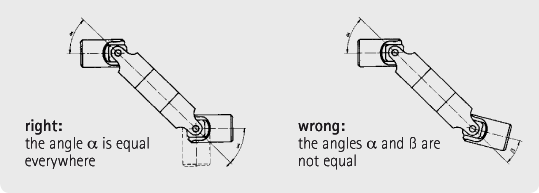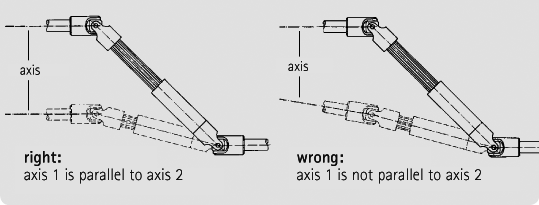Installation instructions
BÜCO’s universal joints and shaft joints are now and will be in the future indispensible and versatile components for transmitting rotary motions.
If two shafts, which are inclined towards each other at a given angle, are connected to each other via a universal joint, and if one of the shafts rotates with a constant angular speed, then the other shaft rotates with a variable angular speed. This irregularity of motion – which is also called gimbal error – causes the rotating angle to advance and lag alternately, thus effecting the second shaft to rotate with sinusoidal fluctations. The greater the deflection angle a, the greater the non uniformity of the rotating motion.
For this reason, single universal joints are only used when variable rotary motion is permissible. The non uniformity of motion can be compensated by using two single universal joints in sequence or by using a double universal joint. When properly installed the second universal joint can compensate the irregular motion of the first one under the following conditions as enumerated by DIN 808.
1. Correct fork position: when using two single universal joints make sure that the two inside forks or brackets (for bracket versions) are in flat formation, as in the case of double universal joints.

2. The deflection angles at both ends must be equal.

3. The driving and driven shafts may only be shifted in directions parallel to the shafts.

4. The bearings of the shaft joint or of the double universal joint - should be positioned as close as possible to the universal joints.

